Read Chapters, Mastering Bio Test, Draw in Lab Notebook, Tomrrows Lab Questions on a Paper
one.1: Lab Safe and Laboratory Notebook
- Page ID
- 36743
Learning Objectives
Goals:
- Empathise the importance of a well-kept notebook.
- Learn how to enter information and maintain a legal scientific notebook.
- Familiarize students with basic safe rules.
- Allow students to get familiar with the condom equipment in the laboratory.
Educatee Learning Outcomes: :
Upon completion of this lab, students will be able to:
- Record information into a notebook in a legally adequate format.
- Format a table of contents.
- Make appropriate corrections to their notebook.
- Engage in proficient laboratory practices.
- Properly utilise Personal Protective Equipment (PPE).
- Place the location and proper apply of emergency equipment.
- Recognize the significant of common laboratory safety signs.
- Translate data on the safety diamond.
Introduction
Regardless if you work at a biotechnology visitor or in an academic research lab, keeping a lab notebook is a requirement. The Nutrient and Drug Administration's (FDA) handbook states, "if it isn't written down, it wasn't done." The lab notebook is considered a legal document and can be used in court to settle patent disputes or to report a specialist's finding in paternity suits or criminal cases. Oft times, the lab notebook is used as a starting point for other scientists who work in the lab. Lab notebooks are always maintained for the following reasons:
- To record the steps an individual has carried out and to certificate their observations
- To establish ownership in case of a patent dispute or other legal bug
- To establish guidelines used to evaluate the process in which a product was made and to evaluate the product itself
- To follow the production of a production through the manufacturing procedure
- To create a contract between a company and consumers and/or between a company and regulatory agencies
- To demonstrate a procedure was done correctly
- To develop, follow, and evaluate standard operating procedures (SOP)
Without documentation, even quality work is worthless. In the upshot of an experiment declining, the documentation allows for a scientist to review their protocol and make adjustments for hereafter experiments. As stated above, in industry, lab notebooks are legal documents. They are used to determine product quality, patent rights, and liability. Notebooks are e'er treated every bit if they volition exist used in court because the consequences of not doing so could be devastating to a company.
Part I: Setting Upwards a Legal Scientific Notebook
A notebook should contain what equipment and materials were used and what steps were followed to show that the equipment and materials were validated before use. In case of an audit past regime regulatory agencies, a company must exist able to produce documentation that proves that they are following Good Manufacturing Practices (GMPs). If they find that a notebook was missing information or was non legible, so the company may be fined or held liable for amercement in a product lawsuit. The importance of a well-kept notebook cannot exist emphasized enough.
Guidelines for Setting Up a Legal Scientific Notebook
*For the purpose of this grade, pages suitable for a lab notebook are included in the appendix. Your instructor may directly yous to print a specific number of pages and demark them with staples along the long left edge to serve as a low-cost substitute for an official bound notebook.
- Obtain a spring notebook, such equally a composition book. Spiral notebooks are non adequate.
- Use merely blue or black pen to make entries. NO PENCIL Allowed.
- Label the outside of your notebook with the information:
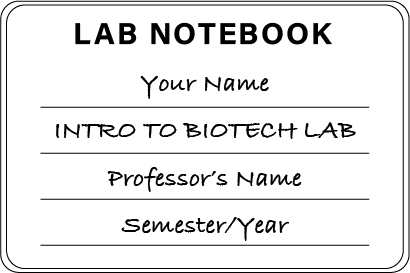
Figure 1. Lab notebook comprehend setup: Row one: Name, Row ii: Intro to Biotech Lab, Row 3: Professor'due south Name, Row 4: Semester/Yr. - Make pages i-4 the Tabular array of Contents. Write "Table of Contents" at the tiptop of each of these pages. Record the title of each lab or entry and the page number for each.
- Each page in the notebook must be numbered. Number each page of the notebook in the upper corner with the first page of the notebook being "page one." The back of the first page will be "folio 2" and so on.
- Tape the date of each entry at the top of each folio.
- Sign and date the bottom of each folio.
- For each experiment (or activity) that yous perform, you should include the purpose for the experiment, the materials and methods you use, any data tables, figures or graphs properly labeled with a championship, and a conclusion.
- Do not erase errors. Merely draw a single line through an erroneous entry, then add your initials. Enter the correct entry nearby.
- Never get out bare spaces. Draw a diagonal line through all open up or blank space.
- If an entry continues on a different page, include "become to page ____" on the bottom correct mitt of the folio to let the reader know where the balance of the information is located.
- Graphs and other modest sheets of paper can exist pasted into the notebook using a gum stick.
- Always include enough details for someone else to successfully indistinguishable the work y'all take recorded.
- Characterization all figures, tables and calculations. Figures should be labeled on the bottom left and tables are labeled on the pinnacle left.
- Never remove pages from your notebook.
Activity: Analysis of Sample Lab Notebook Entries
- Using bluish or black pen complete steps A-Eastward of the "guidelines for setting up a legal scientific notebook."
- Enter a title in your lab notebook folio (and in Table of Contents) equally "Assay of Sample Lab Notebook Entries."
- Label the height of folio 5 Lab A: Analysis of Sample Lab Notebook Entries.
- Each student should obtain a copy of the "Sample student notebook entries."
- Review each of the iii samples by yourself. You may choose to apply the notebook scoring rubric provided in the appendix of this transmission. Once you have reviewed the entries you tin can discuss your opinions with your grouping members. Make a list of what the student did well and what the pupil could have improved upon.
- Draw three tables into your notebook, ane for each student entry you volition exist evaluating.
Score: ____ / 10 pt
| What did educatee exercise well? | Improvements Needed? |
|---|---|
- If you lot were grading these lab entries, what categories/criteria would y'all apply to assign points? If you were the grader, what overall score (out of 10 points) would y'all assign the samples?
Part II: Lab Safety
Introduction
Laboratory condom involves all the measures taken by the laboratory worker, laboratory owner, institution and regulatory agencies to eliminate potential harm to human health and well-being. Although steps are taken to reduce risks in the workplace, safety is a matter of personal responsibleness. A biotechnology lab may have several condom hazards that must be known and understood by all students or employees working in the lab. It is the responsibility of each person in the lab to know and follow basic laboratory prophylactic rules, to understand how to safely operate equipment, sympathize the hazards of materials they are working with and to work to reduce potential risks. In the outcome of an blow, information technology is disquisitional to know the location and utilise of emergency equipment. Having this knowledge should assist to prevent accidents and minimize damage that might occur in the outcome of an blow.
A. Laboratory Safety Equipment
Draw Tabular array 2 in your lab notebook. Fill in the location of the following lab safety items:
| Safety Equipment | Location |
|---|---|
| Phone and Campus Emergency Number | |
| Fire Alarm | |
| Fire Extinguisher | |
| Heart Launder | |
| Shower | |
| Glass Waste Container | |
| Biohazard Waste Container | |
| Lab Coats | |
| Goggles | |
| Gloves | |
| Disinfectant | |
| Offset Help Kit | |
| Broom and Dust Pan | |
| Emergency Class Evacuation site |
Laboratory Safety Guidelines and Contract
General Rules
- No guests are immune in the lab.
- Know emergency procedures, employ and location of emergency equipment (emergency exits, fire extinguishers, fire coating, middle launder station, starting time aid kit, and cleaved glass container).
- In case of burn, evacuate the room and assemble outside the edifice.
- Report all accidents, no thing how insignificant they appear, to a laboratory supervisor
- Be aware of your surroundings and potential dangers created by others.
Personal Protection
- Do non fume, consume, drink, chew gum, or utilise cosmetics in a laboratory.
- Wear protective clothing such equally long pants, closed-toe shoes, a lab coat, and goggles.
- Tie long hair upwardly or backside the shoulders. Do non clothing long, dangling jewelry or scarfs.
- Dispose of gloves in the laboratory trash. Do non wear lab coats and gloves into public areas. You will need to dispose of gloves and take off your lab coat before leaving the lab.
- Cover cuts or scrapes with a sterile, waterproof bandage before entering a lab.
- Wash peel immediately and thoroughly if contaminated by chemicals or microorganisms.
- Launder your hands regularly, with soap and water, specially after working with bacteria.
- If you are pregnant or ill, please allow your lab instructor know immediately.
- Permit your lab instructor know before leaving the classroom.
Handling Chemicals
- Keep all containers capped with the appropriate lid. Clearly label items produced in the lab.
- If a chemical is splashed into the eyes or skin, affluent for 15 minutes.
- Clean upward spills and broken glass immediately. Use broom and dustpan to pick upwardly broken glass.
- Keep chemicals away from direct heat or sunlight. Go along containers of alcohol, acetone, and other combustible liquids abroad from flames.
- Read labels carefully. Exist aware of hazardous chemicals and precautions for safe use.
- Follow instructions nearly proper disposal of lab reagents.
Handling Equipment
- Go on your work area clean and clutter-free.
- Be enlightened of your potential impact on others.
- Notify lab supervisor of malfunctioning equipment.
- If you do not know how to use an instrument or equipment, then practise non bear upon information technology.
- Practise not use laboratory equipment without first receiving education in its use.
- Keep balances clean and dry out, always use weigh paper/boats.
- Never leave rut sources unattended. Be careful when using hot plates or burners. Notation that there is often no visible flame, glow or sign that objects are hot.
I have read the lab safety guidelines, constitute all lab safe equipment, and sympathize the procedure about emergency class evacuation. I will conduct myself in a safe and conscientious mode and take proper care in the utilise of all lab equipment.
Signature _______________________________________________ Date ______________________
B. Lab Condom Video
- While watching the lab prophylactic video, accept notes on as many safety hazards as y'all notice.
- When the video is over, discuss the hazards you observed with your group and what can be washed to piece of work safely using good laboratory practices.
- Make Table 3 in your notebook and organize your observations.
| Laboratory Gamble Observed | Correction/Practiced Laboratory Practices (GLP) |
|---|---|
C. Chemical Hazards Labeling Activity
Hazard Communication Standard (HCS)
A quick assessment of a chemic's hazards is visible on its container on a Hazard Communication Standard (HCS) characterization. HCS labeling does not supersede the more detailed Safety Data Sheet (SDS) but rather gives the following information in brief:
- Name, Address, and Phone Number of Responsible Party (i.e., the manufacturer or distributor)
- Chemical Identification - chemic name and code or batch number that matches the information constitute in Section ane of the chemic'southward SDS
- Point Word - "DANGER" for more severe hazards or "WARNING" for less severe hazards
- Hazard Statements - a cursory clarification of the hazard(due south)
- Precautionary Statements (optional) - prevention, response, storage, and disposal
- Hazard Category Numbers 1-4 (optional) - "1" for the nearly severe hazard to "iv" for the least severe
- Pictograms
Pictograms are red-bordered, diamond shapes that frame a black graphic on a white background, and these symbols depict the blazon of hazard(southward). HCS labels are required by the Occupation Safety and Wellness Administration (OSHA) and are standardized, having been adopted from the Globally Harmonized Organization of Classification and Labeling of Chemicals (GHS) fix by the United Nations.
| Pictogram | Hazard Class | Gamble Type | Case Indicate Word & Hazard Statement |
|---|---|---|---|
| | Flammables Cocky-Reactives Cocky-Heating Pyrophorics Emits Combustible Gas Organic Peroxides | Physical | DANGER Heating may cause a fire |
| | Explosives Self-Reactives Organic Peroxides | Physical | WARNING Fire or project hazard |
| | Gases Under Pressure | Physical | Warning Contains gas nether pressure; may explode if heated |
| | Corrosive to Metals Corrosive Pare Corrosion/Burns Eye Damage | Physical | DANGER Causes severe skin burns and eye damage |
| | Oxidizer (gases) Oxidizers (solid or liquid) | Physical | Alert May intensify fire; oxidizer |
| | Acute Toxicity (fatal or toxic) | Health | DANGER Fatal if swallowed |
| | Carcinogen Mutagenicity Respiratory Sensitizer Reproductive Toxicity Target Organ Toxicity Aspiration Toxicity | Health | DANGER May cause cancer |
| | Irritant (skin and eyes) Dermal Sensitizer Acute Toxicity (harmful) Narcotic Effects Respiratory Tract Irritation Hazardous to Ozone Layer (optional) | Health | Warning Causes skin irritation |
| | (optional label) Environmental Toxicity Aquatic Toxicity | Environs. | WARNING Toxic to aquatic life |
Procedure
- Walk around the room and locate two items that brandish the Hazard Communication Standard label.
- Draw a sketch of the pictogram in your lab notebook and advisedly copy the chemical identification data of the reagent that information technology is describing.
- Write down the label's bespeak word and any chance statements, and annotate on the characteristics and hazards of the 2 items.
Chemical Hazards and Waste material Disposal
Laboratory waste material must be disposed of safely and appropriately. Labs must be aware of the school, land and federal guidelines for waste disposal. Many chemicals can NOT exist poured downward the sink. Be sure you know which chemicals are hazardous, require special storage and must exist placed into properly labeled waste containers kept in smoke hoods until sent to the proper hazardous waste disposal. Know which materials are considered biohazards and the proper area or container to place them then they tin be autoclaved.
| Blazon of Waste | Definition | Required Treatment |
|---|---|---|
| Chemical Waste matter | Any solid, liquid, or gaseous material generated in the laboratory that poses a danger to man wellness or the surroundings. | This will vary depending on the chemical. The establishment you lot are in volition have specific requirements to encounter regulatory code. The aim is to reduce hazards and minimize environmental impact. Follow your teacher'southward directions. |
| Solid Biohazardous Waste | Materials such as pipettes, petri dishes, or other culture flasks disposable or glass that practise not contain liquid but were in contact with cultures of cells or human or animal-derived materials. | Disposable waste is placed in red biohazard bags. Treat and supercede bags when they are halfway full. Reusable glass materials must be placed in autoclavable trays. To treat waste, the autoclave must be properly loaded and set for a minimum temperature of 121°C (250°F) for hr at fifteen psi. Autoclave tape must exist placed on the bag or tray to indicate information technology has passed through the cycle. Material should be autoclaved as shortly as possible, simply at a maximum of vii days afterwards information technology is generated |
| Liquid Biohazardous Waste matter | Broth cultures or prison cell culture media or contaminated liquid media. | Decontaminate using x% bleach solution for a minimum ii hours contact time. Dispose down the bleed with h2o. Alternatively, racks of used culture tubes tin can be autoclaved using the aforementioned temperature and fourth dimension indicated above simply set for a slow frazzle liquid setting. Employ autoclave tape equally above. Treat waste product equally presently as possible but not longer than 7 days post generation. |
| Sharps Waste | Whatsoever object that is capable of piercing or damaging human being pare that is contaminated with chemic, or biohazardous waste e.g., scalpels, blades, needles, broken glass, etc. | Place in the marked sharps container. Remember that broken glass that is not contaminated will accept a separate disposal container within the laboratory. |
D. National Fire Protection Association (NFPA) Hazard Rating System
The National Fire Protection Association (NFPA) Hazard Rating System was designed for emergency workers such every bit fire responders to exist able to swiftly get basic data about the hazards of a chemical from a simple label. The diamond-shaped label is divided into four color-coded squares, and inside each square is printed a ratings lawmaking or number from 0-4, with "0" as the least astringent risk to "four" as the most severe.
Inside the red square, the number indicates the flammability rating; blue indicates the wellness hazard rating; yellow indicates the chemical'south instability; and the white foursquare indicates any special hazards.

Procedure
- Walk around the room and find a label with the NFPA safety diamond. Read the explanations in the table above. Write downwards the chemical proper noun and describe its NFPA diamond.
- Remember of a chemical used in a lab or observe a second container without an NFPA characterization already affixed and and so write down its name. Use an internet or in-class resource to draw that chemical's NFPA ratings.
- Compare the NFPA 704 characterization with OSHA'south Hazard Communication label from the previous activity. How are they the same? How do they differ? What are the pros and cons of each type of label?
E. Condom Data Sheets (SDS)
A Safety Data Sheet (previously chosen Fabric Prophylactic Information Sheet) for each chemic is required by the Occupational Prophylactic and Health Administration (OSHA). Sections 1-eight contain information about the identification, hazards, composition, rubber handling practices, and emergency control measures. Sections nine through eleven and 16 contain technical and scientific information, such as physical and chemical properties, stability and reactivity, toxicology, and exposure control.
Draw table i.3 in your lab notebook and answer the following.
Using the SDS for sodium hydroxide provided to your group, determine what should be done in the event that the reagent: a) got on your skin b) splashed into your eyes c) was inhaled
| Adverse Outcome | Response |
|---|---|
| a) NaOH in optics | |
| b) NaOH on skin | |
| c) NaOH inhaled |
F. Science Laboratory Rubber Signs
| | | | |
| | | | |
| | | | |
| | | | |
| | | | |
| | | | |
Written report Questions
- Review lab prophylactic signs and know their meanings.
- What are the types of PPE required in a laboratory?
- How should you dispose of glass waste?
- How should you dispose of biohazard waste?
- What should you do if a chemical gets in eyes?
- Given a laboratory hazard, be able to describe the correction of GLP needed in the lab.
- What exercise the iv diamonds in the NFPA stand for?
- Why must a scientist go on a lab notebook?
- In industry, a lab notebook is a legal document. What can it be used to determine?
- What is GMP?
- What are the Do'south and Don'ts of keeping a legal notebook?
Puzzle: Lab Condom and Lab Notebooks
| Terms Alkali metal, Biohazardous, Broom, Contents, Corrosive, Diamond, Flammability, Four, Glass, |
| ACROSS | DOWN |
|---|---|
| 1. broken exam tubes and beakers should be placed in the ___ waste container 7. hazard that the yellow color on the NFPA sign indicates eight. governmental agency that regulates chemical safe information sheets 9. broken test tubes/beakers should be swept with a ___ and dust pan 10. COR on the NFPA sign 12. instrument used to write in a scientific lab notebook thirteen. used razors, scalpels and needles should exist placed in the ___ waste matter container 14. SOP stands for Standard _____ Procedures fifteen. rating number for the nearly dangerous hazards in the NFPA sign 16. ALK on the NFPA sign 17. GLP stands for Proficient ____ Practices 18. GMP stands for Good ____ Practices 19. take chances that the blue colour on the NFPA sign indicates | 2. the lab notebook is considered a ___ document and tin exist used in court iii. abbreviation for Personal Protective Equipment 4. shape of sign that lists the chemic ratings from the National Fire Protection Association 5. hazard that the white color on the NFPA sign indicates six. table plant at the front end of a scientific lab notebook ix. type of waste containing recombinant Dna and tissue culture dishes 11. OX on the NFPA sign 15. risk that the crimson color on the NFPA sign indicates |
Paradigm Attributions:
- Flammable substances sign via Wikimedia Commons; public domain
- Explosive substances sign via Wikimedia Commons; public domain
- Gas pressure hazards sign via Wikimedia Commons; public domain
- Corrosive substances sign via Wikimedia Commons; public domain
- Oxidizing substances sign via Wikimedia Commons; public domain
- Toxic substances sign via Wikimedia Eatables; public domain
- Health hazard sign via Wikimedia Commons; public domain
- Hazardous substances sign via Wikimedia Eatables; public domain
- Environmental adventure sign via Wikimedia Eatables; public domain
- Eyewash sign via Wikimedia Eatables; public domain
- Emergency shower sign via Wikimedia Eatables; public domain
- Fire blanket sign via Wikimedia Commons; public domain
- Fire extinguisher sign via Wikimedia Commons; public domain
- Ionizing Radiation sign via Wikimedia Commons; public domain
- Laser Radiation sign via Wikimedia Commons; public domain
- Explosive substances sign via Wikimedia Commons; public domain
- High Voltage sign via Wikimedia Commons; public domain
- No eating or drinking sign via Wikimedia Commons; public domain
- Nonpotable h2o sign via Wikimedia Eatables; public domain
- Do non enter sign via Wikimedia Commons; public domain
- No smoking sign via Wikimedia Commons; public domain
- Corrosive Substances sign via Wikimedia Eatables; public domain
- Poisonous substances sign via Wikimedia Commons; public domain
- Oxidizing textile sign via Wikimedia Commons; public domain
- Highly combustible substances sign via Wikimedia Commons; public domain
- Emergency telephone call push sign via Wikimedia Eatables; public domain
- First Aid sign via Wikimedia Commons; public domain
- Automatic heart defibrillator sign via Wikimedia Eatables; public domain
- Ionizing radiation sign via Wikimedia Commons; public domain
- Utilise protective eyewear sign via Wikimedia Eatables; public domain
- Use protective handwear sign via Wikimedia Commons; public domain
- NFPA 704 warning sign sign via Wikimedia Commons; public domain
- Health Run a risk sign via Wikimedia Eatables; public domain
Source: https://bio.libretexts.org/Bookshelves/Biotechnology/Lab_Manual%3A_Introduction_to_Biotechnology/01%3A_Techniques/1.01%3A_Lab_Safety_and_Laboratory_Notebook
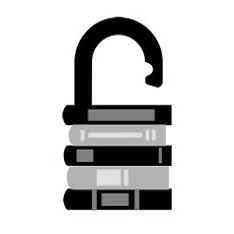
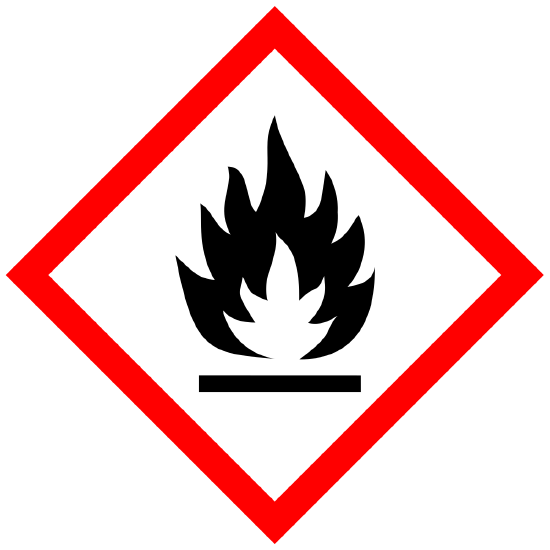
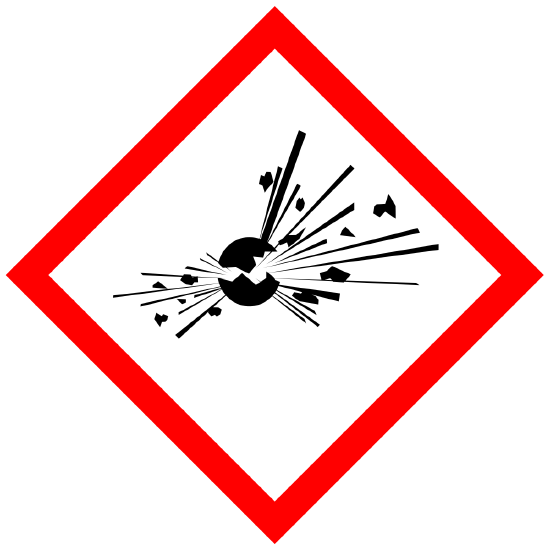
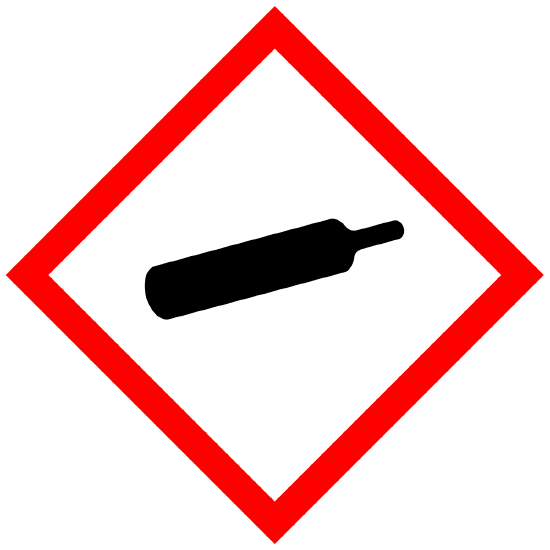
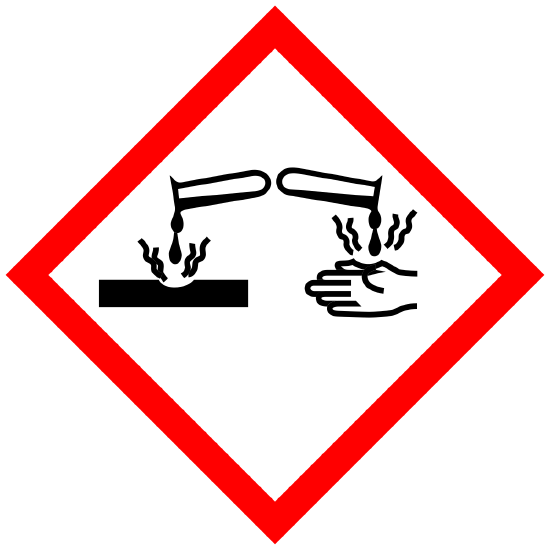
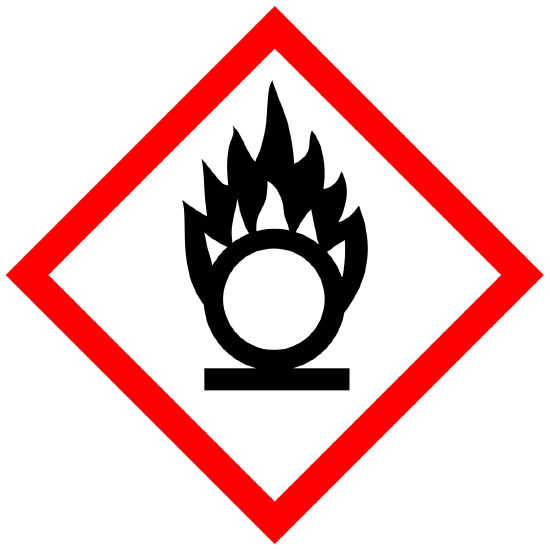
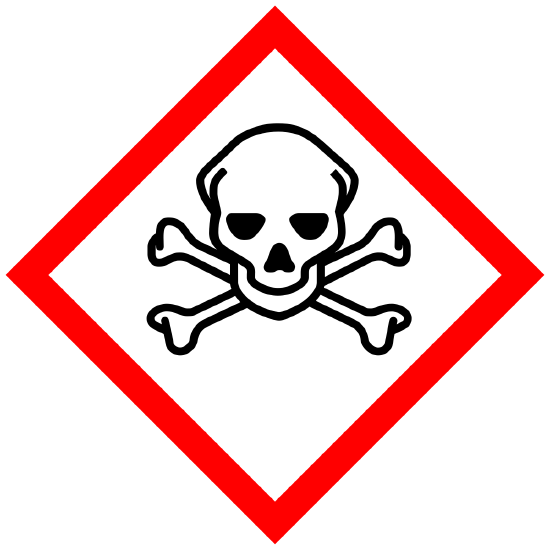
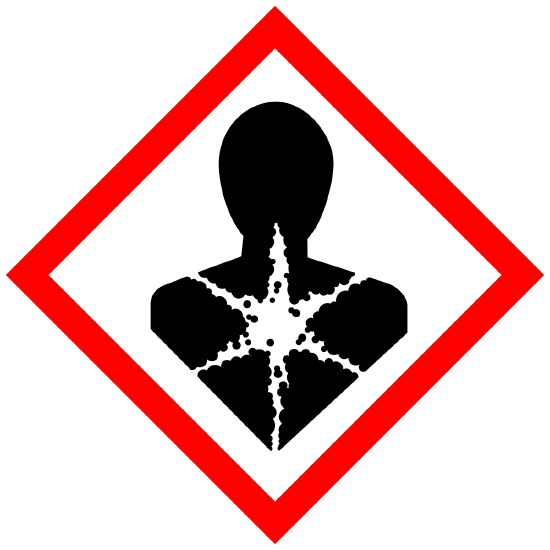
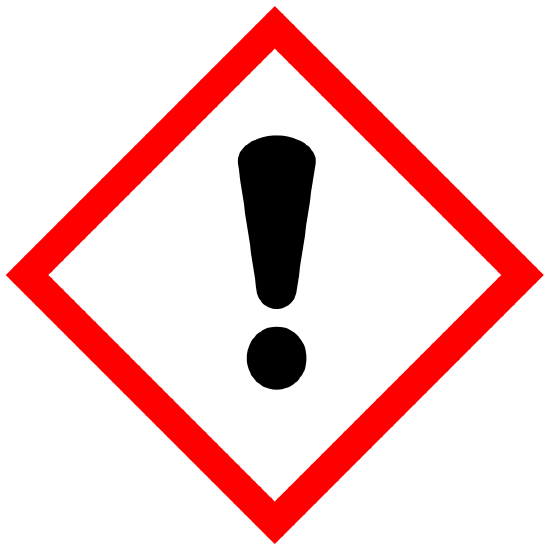
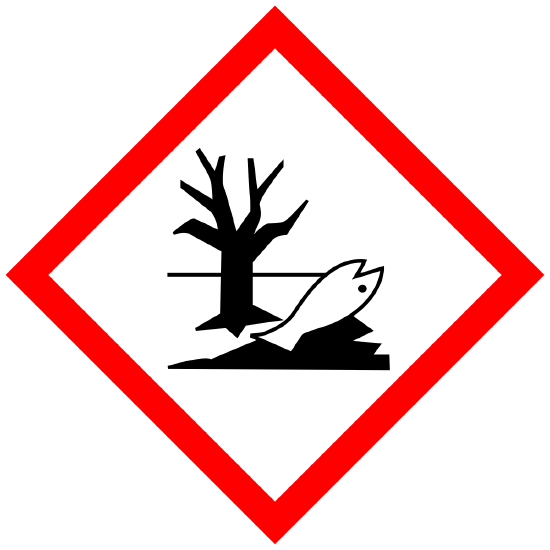
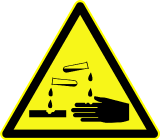
0 Response to "Read Chapters, Mastering Bio Test, Draw in Lab Notebook, Tomrrows Lab Questions on a Paper"
Postar um comentário